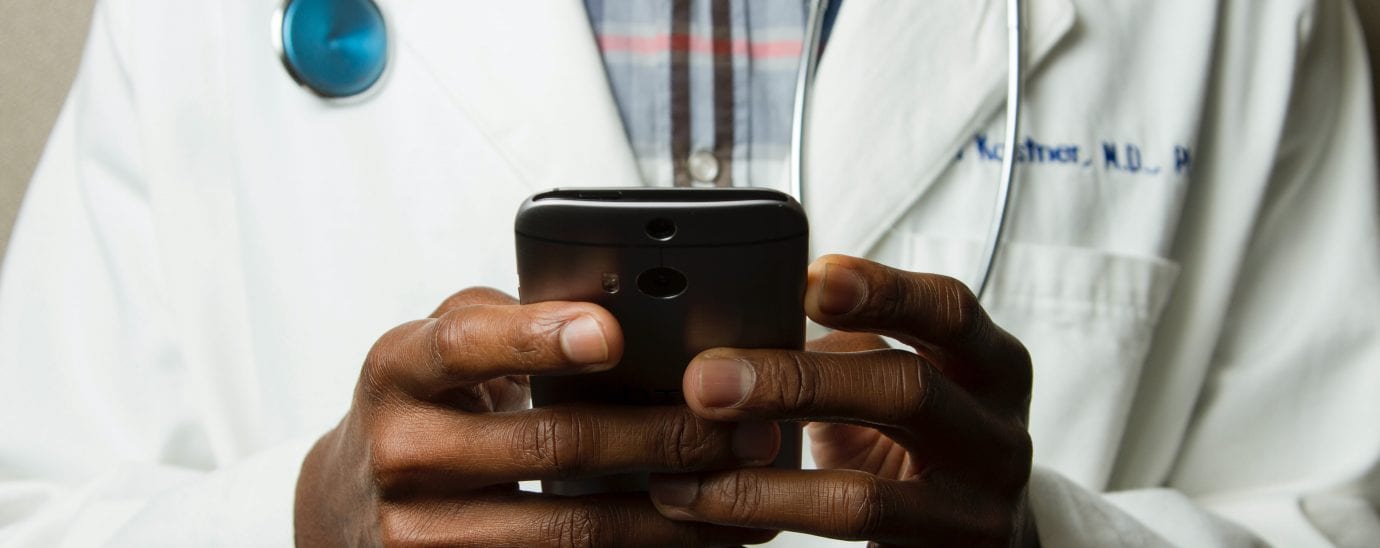A connection between carers and patients requires connected technologies

By Stefan Spendrup, Vice President of Sales, Northern and Western Europe at SOTI
Outdated and non-existent healthcare technology is potentially leaving lives at risk, following a year in which COVID-19 has put more strain on industry workers than ever before. Uncovered by SOTI research – which surveyed homecare workers, visiting nurses and healthcare professionals across the UK and Europe, as well as in Canada, the U.S. and Australia – the findings show that the level of technological immaturity is affecting their ability to care for people amid an admin deluge.
The survey forms part of SOTI’s new Critical Technology for Critical Care: State of Mobility in Healthcare 2020/21 Report, which has explored how equipped healthcare workers are from a digital perspective – the key mobility challenges they are experiencing on the frontline and how well their organisations have fared during the pandemic.
Staggeringly, more than two-thirds of healthcare workers in the UK alone, and more than half globally, agreed that investment in new or improved technology frameworks could help to save more lives.
Spending too long on processes that could be simplified with a more modern and interconnected technology infrastructure would be challenging at the best of times. But 2020 has not been the best of times. With healthcare budgets already stretched, and more scrutiny on patient recovery statistics than ever before as COVID-19 continues to sweep the globe, lessons must be learned. Healthcare workers need help, and it is time for the industry to equip them with the tools they need to deliver critical care.
Calls for digital assistance remain unanswered
Further emphasising the problem at hand, 63% of survey respondents, worldwide, estimate that they have experienced a device or system failure due to technological downfalls within an average working week. A further 56% confirm that using their respective institution’s technology wastes valuable time that could be spent helping patients. In fact, less than half of workers’ time, and only 37% in the UK specifically, is spent helping patients. The majority is accounted for by activities such as updating patient records, recording information or keeping on top of administrative tasks.
Considering that very few people in the sector enter the field to be carrying out such activities, the long-term fear of fatigue and lost skills is a very real possibility. It comes as no surprise, therefore, that such a vast percentage are calling for digital assistance.
Worryingly, so far, these calls have gone unanswered, with only one-third of global healthcare workers stating that their employers have invested in new technology. Even more concerningly, this has contributed to a statistic where only a quarter believe their technology systems are prepared to manage the pandemic.
This year has been a wake-up call for the relationship between the sector and technology, and while its impacts may have already been felt, there remains an opportunity to safeguard against future crises. There must be action now in the form of a connected network that enables immediacy and simplicity in terms of patient care, and automation and control with regards to overall operations and management.
Read More: MedTech on Top Business Tech
Security scepticism
The Internet of Things (IoT) holds the key to make operations simpler, smarter and more reliable. By connecting devices across a vast and interconnected network, and providing workers with more agile and mobile platforms, both simplicity and manageability are catered for simultaneously.
It seems an obvious solution, and there is an element of ‘why wasn’t the sector already adopting such an infrastructure?’. The answer, of course, is security. Providing mobile equipment to healthcare professionals out in the field is a delicate balancing act, and that has not escaped the notice of those implicated. While more than two-thirds agree that accessing employers’ systems on a mobile device when visiting patients would make their job easier, 82% have also experienced issues with various systems in the past. At which point they understandably want to revert to more familiar processes to avoid any mistreatment or lost information.
This scepticism of digital robustness and security hasn’t been helped in recent years by high-profile security breaches, such as the NHS WannaCry ransomware attack, and two notable attempts on large organisations in 2020, including on Brno University Hospital in Prague (which was successful) and even the World Health Organisation (which thankfully was not). Sadly, healthcare is not off limits to cybercriminals and to physically place the responsibility of digital management and input in the hands of workers remains a daunting prospect for many.
That’s why the emphasis should not be solely on digitising healthcare and offloading that transition to those in the field. The next step for healthcare needs to be an education-driven shift to a new culture based around secure interconnectivity.
Taking control and relieving the burden
In total, around 80% of healthcare workers globally are concerned about the security of patient records as part of a digital infrastructure – a valid and real worry if devices are not managed properly.
However, this derives from a lack of understanding – rather than a lack of availability – of platforms that can mitigate these issues, if they’re implemented in line with broader infrastructure transitions. Platforms, such as the SOTI ONE Platform, provide all the requisite tools to connect and manage an IoT transformation and associated mobility devices, to offset this concern.
It is a new frontier for healthcare which inevitably comes with trepidation about how to manage complexity around security, support, analytics, integrations and upgrades. But it is this level of sophistication, safeguarding, visibility and resulting efficiency that can help solve the sector’s most pressing challenges.
It’s not just about adopting IoT, but taking control of it. The onus is on decision-makers to have a central point of analysis and control that relieves pressure from siloed individuals on the frontline. Technological transformation should not be a burden to those out in the field, but a responsibility among their employers to embed such a culture into their institutions, so that those workers can operate in a less inhibited way.
For any enterprise or organisation, this should be a differentiating proposition, but in a sector where lives are literally at stake, the time for smarter technology adoption is now.
As such, the issue of trust between frontline workers and digital devices can be remedied, and their primary ambition of treating those in need can once again be their primary role.
